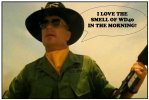- Joined
- Jun 3, 2015
- Messages
- 2,119
I was interested to read that GEC had recommended someone using WD40 as a way of restoring the handle on an abalone #38 and was interested if it is used or recomended by others.
WD40 has a reputation for being more of a solvent than a lubricant, and people are frequently scolded in online forums for suggesting it be used as a lubricant. For example, everyone decries its use on the working parts of a fishing reel in favour of more specialized lubricants. Like many others, I have stayed away from using it on knives due to that aggressive feedback.
However, while that online opinion may be true, it's also one of the most commonly used products for protecting metals around the home, and seems to protect them very well. Note -this is a protectant, not as a lubricant - I am not talking about moving parts. Importantly, a spray can is cheap and handy and quick to use - which may explain why it gets results - simply because it is there.
I don't think WD40 has an adverse effect on handles made of wood etc, although it doesn't offer the same enhancements that an oil does to wood.
So what do people think?
WD40 has a reputation for being more of a solvent than a lubricant, and people are frequently scolded in online forums for suggesting it be used as a lubricant. For example, everyone decries its use on the working parts of a fishing reel in favour of more specialized lubricants. Like many others, I have stayed away from using it on knives due to that aggressive feedback.
However, while that online opinion may be true, it's also one of the most commonly used products for protecting metals around the home, and seems to protect them very well. Note -this is a protectant, not as a lubricant - I am not talking about moving parts. Importantly, a spray can is cheap and handy and quick to use - which may explain why it gets results - simply because it is there.
I don't think WD40 has an adverse effect on handles made of wood etc, although it doesn't offer the same enhancements that an oil does to wood.
So what do people think?


